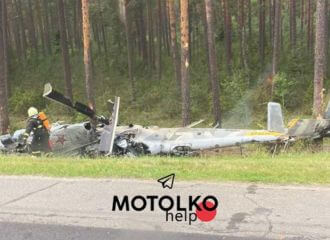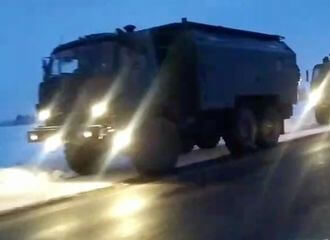На русском языке:
Обзор основных событий беларусской пропаганды о войне в Украине за 27 марта от Гаюна
На беларускай мове:
Агляд асноўных падзей беларускай прапаганды аб вайне ва Украіне за 27 сакавіка ад Гаюна
Hajun Project published a report on Belarusian propaganda activity on the war topic for March 27.
«Arsenal» TV show was broadcast on Sunday. Some of the stories were directly or indirectly related to the war in Ukraine.
1) The show included a story about the situation on the Belarusian-Ukrainian border. It should be noted that earlier, this story (its short version) was also published on the resources of the Ministry of Defense.
Key points of the story:
- A correspondent talks about the concentration of tank units on the border. According to him, the tasks of the military are purely defensive: no one is going to attack anyone;
- Soldiers in the positions are as focused as possible: relax is a threat to national security;
- The Belarusians rallied around the army in a difficult period;
- The situation at the border is calm, but sometimes residents are discomforted with news about what is happening in Ukraine;
- Russians and Ukrainians are no strangers to us – our hearts ache for all;
- The price of peace is more clearly felt in Belarus.
Thus, several standard recent messages are conveyed through the story: Belarus is defending itself, and is not going to attack Ukraine. But there are also new ones — «our hearts ache for all». Thus, there is an attempt to distance from participation in the war. It is also possible to notice the use of the old narrative about «there is no war in Belarus», which again begins to be actualized and actively used.
The words «discomfort with news from Ukraine» sound rather cynical. But in this case we will refrain from additional comments.
2) In the «Razvod» column, the correspondent strangely mixed up the genocide of the Belarusians, the EU countries, the USA and Canada, the Wehrmacht, and the war in Ukraine.
The «logical» chain:
- During the Great Patriotic War, the genocide of the Belarusians was carried out;
- A small number of volunteers from the United States, Canada, and Great Britain fought in the Wehrmacht. The exact number of volunteers is unknown;
- Washington and Brussels are «back in the fight against Moscow and Minsk,» and support the nazis in Ukraine;
- Russian troops find «blood-filled SBU [Ukrainian Security Service – ed.] and National Security Service prisons, where prisoners were tortured» in Ukraine;
- Mass graves of neo-nazi victims were found in Donbas;
Let us note that different episodes of the same program use rhetoric ranging from «our hearts ache for the Ukrainians» to «power in Ukraine is in the hands of nazis.» We can state that there is already «confusion» in their (Belarusian) and Russian propaganda narratives, which should be given to the mass audience.
We should also note the attempt to use the themes of the investigation of the genocide of the Belarusian people in a variety of socio-political contexts (including in relation to the war in Ukraine).
The review is made by the monitor group of the Hajun Project


